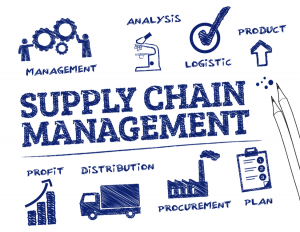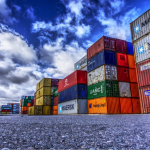6 Supply Chain Management Issues That Hurt the Bottom Line
This is a guest post by Christina Morrison.
An efficient and reliable supply chain has always been key to success in many different sectors. However, with ever-increasing competition for warehouse and truck space, as well as an ongoing labor shortage, today’s supply chain environment is tighter and more competitive than it’s ever been. That leaves very little room for mistakes—but even so, many supply chain problems can be frustratingly difficult to pin down and deal with.
 That’s why businesses must practice the sometimes-overlooked art of supply chain analysis to get a better picture of which factors may be involved. When drawing up plans for a new business or troubleshooting existing issues, it’s important to proactively address the issues before they become unmanageable.
That’s why businesses must practice the sometimes-overlooked art of supply chain analysis to get a better picture of which factors may be involved. When drawing up plans for a new business or troubleshooting existing issues, it’s important to proactively address the issues before they become unmanageable.
The following six common supply chain management problems can create major headaches for any business. The good news is that none of them are insurmountable—but they do require smart application of resources to solve, and the first step in that process is to identify and target them.
1. Lack of Inventory Visibility
When a supply chain doesn’t give its stakeholders a good idea of what is and isn’t in stock, it’s not performing one of the key functions of a supply chain. Out-of-stocks and surpluses can create big imbalances that hurt supply chain performance, so it’s critical for businesses to aggressively tackle these issues.
Using a robust distribution software solution is often cited as one of the best ways to do it. These advanced software products can help a business get a handle on inventory issues, and many of them integrate with physical inventory control systems such as barcode and RFID scanners. Furthermore, new cloud-based options for these software systems have brought down their upfront and deployment costs, and there are now options available at a variety of price points.
2. Inflexible Operations
The weather won’t always be sunny, traffic will sometimes be unmanageable, and human error will creep in. When these eventualities occur, the supply chain must have the flexibility to react without creating a major disturbance. Moreover, supply and demand themselves are often subject to volatile swings—so the supply chain must be ready.
Building a flexible supply chain isn’t easy and requires some creativity. Moreover, it requires time spent to develop good relationships with a wide network of suppliers and carriers, as well as management leadership that understands the importance of collaborative planning processes. A unilateral plan is often an inflexible one, so the businesses that find the greatest supply chain success are usually the ones able to cultivate seamless collaboration up and down the chain.
3. Poor Resource Utilization
From suboptimal warehouse layouts to inefficient routing practices, resource utilization can be a big issue in logistics. Many businesses don’t realize that they could be leveraging their pre-existing capacities more than they do, resulting in wasteful spending and unseized opportunities.
 Enterprise resource planning (ERP) software can provide great opportunities to get a new perspective on how a business is utilizing its resources. By consolidating multiple data streams into a single flexible platform, distribution and manufacturing ERP software provides a holistic picture of a company’s supply chain health. For businesses using ERP to address resource utilization, reporting functions are a key area to look at since they can offer useful insights about resource use.
Enterprise resource planning (ERP) software can provide great opportunities to get a new perspective on how a business is utilizing its resources. By consolidating multiple data streams into a single flexible platform, distribution and manufacturing ERP software provides a holistic picture of a company’s supply chain health. For businesses using ERP to address resource utilization, reporting functions are a key area to look at since they can offer useful insights about resource use.
4. Outdated Equipment
In an industry as capital-intensive as logistics, many businesses will wait until the absolute last minute possible to replace expensive equipment. It’s somewhat understandable—after all, replacing or retrofitting a fleet of fuel-inefficient tractor-trailers is hardly cheap. However, outdated equipment has its costs as well: increased materials consumption, decreased efficiency, and potential safety issues.
While few businesses are up to the challenge of replacing all of their outdated equipment simultaneously, it’s important to conduct periodic technological audits and to identify what needs replacement. That can be anything from vehicle fleets to legacy on premises ERP systems that have been supplanted by superior cloud-based models.
5. Last Mile Inefficiency
The last mile has always been one of the most challenging elements of the supply chain, and it’s only growing in importance. Businesses that can’t meet their needs of last mile transportation are unlikely to succeed in customer-focused markets such as eCommerce retail, particularly when industry giants like Amazon are offering ever-more-competitive delivery options.
Developing robust last mile logistics solutions requires a true focus on customer satisfaction and integrated supply chain relationships. Minimizing touch points, expanding distribution networks, and establishing solid operating procedures are all common areas for improvement on the last mile. For many businesses, adding white glove delivery also fulfills an important niche and adds significant value for the customer. Finally, predictive analytics also has high potential to improve last mile delivery thanks to its ability to help allocate resources more effectively.
6. International Hiccups
Today’s supply chain is often a global operation, and going international multiplies the complexity of a logistics operation many times over. Customs protocols, complex regulations, and political instability can all contribute to bumpy international operations. Clearing these hurdles is a big challenge for businesses seeking to enter the international realm and, all too often, they contribute to stalled growth and failed plans.
 Networking comes to the rescue again here. Businesses need to find supply chain partners in their target international markets that can provide the help they need with customs and transportation systems around the globe. Creating international logistics connections can take a great deal of time and effort, but the returns quickly pay for themselves when it’s time to expand. And naturally, not every business will have the capacity to create a true international network—so, for those that can’t, it’s important to work with a freight broker or carrier that does have that capacity.
Networking comes to the rescue again here. Businesses need to find supply chain partners in their target international markets that can provide the help they need with customs and transportation systems around the globe. Creating international logistics connections can take a great deal of time and effort, but the returns quickly pay for themselves when it’s time to expand. And naturally, not every business will have the capacity to create a true international network—so, for those that can’t, it’s important to work with a freight broker or carrier that does have that capacity.
The global supply chain looks much different than it did 10 years ago, and it shows no signs of slowing down its rapid evolution. Focusing on these bottom-line issues, however, can help businesses maintain a smooth supply chain that fosters growth and provides reliable performance across markets.
This is a guest post by Christina Morrison.
Author Bio
Christina serves as the General Manager for Top 10 ERP. She specializes in the development and management of Business to Business online properties which support businesses within specific industries with software evaluation tools and resources.





Thanks For sharing the article . Keep up the good work